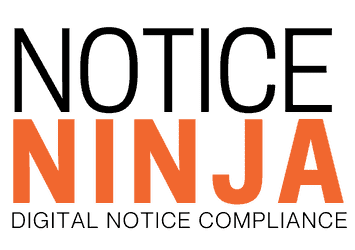Yes, NOTICENINJA is corporate tax notice compliance software that automates key workflows including notice assignments. The platform employs a rule-based system that can manage multiple level rules and ensure notices are directed to the appropriate stakeholder. As a result, you’ll never have to worry about notices being misdirected or slipping between the cracks.

The Moment Tax Notice Compliance Becomes a Liability

22 July
For one payroll and tax department at a national organization, everything seemed under control. Notices were processed. Tasks were assigned. Deadlines were tracked.
But then came the internal audit.
The questions started out simple. How many notices had been escalated last quarter? Which ones were still unresolved? What defined urgency in their workflow?
None of those answers were easy to find.
The team wasn’t failing. They were operating without the infrastructure needed to support their scale. Their process had been built for volume, not visibility.
When Duplicate Tax Notices Go Unnoticed
It started with a local agency. The agency sent a second notice with different formatting and unfamiliar language, and when it landed on a new desk unflagged, the payment was made twice.
That single mistake pulled focus from everything else, drawing in internal stakeholders and leadership who weren’t questioning effort. They were uncovering process breakdown.
There was no consistent method to identify duplicates. No alert or central logic to catch what human eyes missed.
How Audit Reporting Exposed Gaps In Tax Notice Tracking
Soon after, the audit report request came in. They were asked to provide a list of closed notices by jurisdiction and risk level.
The team downloaded spreadsheets. Tried to filter. Cross-referenced other files. Still, they couldn’t confidently validate their data.
Each notice required a manual search to determine ownership, status, and history. Reports couldn’t be generated from a single source. And even when pulled together, they weren’t complete.
What should have taken an hour became a multi-day scramble.
Captured Tax Documents Can’t Connect The Dots
Notices from state and local agencies came in every week. Scanning was fast. But because the team hadn’t yet defined classifications or mapped their workflows clearly, important details weren’t always captured or used effectively.
There was no shared agreement on how to tag notice types. No rules to distinguish amended returns from balance due notices. And no way to route exceptions automatically.
Scanned documents existed in the system. But the process around them wasn’t built to act on that data.
What made the difference later was infrastructure—the guidance to define escalation rules, apply audit feedback, and make decisions visible across roles. That’s what turned resolution into strategy.
Tax Accounts And Entity Structures Were Misaligned
Some notices were tied to old SUI accounts. Others were filed under the wrong entity altogether. As the company grew, new entities were added but not properly linked. Parent and subsidiary relationships weren’t reflected in the system.
In one instance, a refund was delayed because it was tied to the wrong taxpayer ID. No one caught the issue until the check failed to arrive.
The team realized they had no consistent way to track filing responsibilities by entity or by agency.
Lack Of Reporting Filters Created Audit And Risk Blind Spots
Users couldn’t isolate high-priority or escalated notices. There was no filter for local tax issues. No way to group by type, status, or jurisdiction in a single view. And when reports were exported, critical data points were missing.
They needed more than a record of activity. They needed a window into risk, resolution, and accountability.
But the process wasn’t designed for that. It was designed to move notices through the system. Not to help people understand what was happening or what to do next.
Manual Tax Notice Processes Led To Inconsistent Outcomes
To compensate, the team created their own systems. One person tracked escalated notices in Excel. Another maintained a list of local agencies with naming conventions. Reports were stitched together from email, PDFs, and shared folders.
Every success depended on memory, vigilance, and individual effort. And when one person was out or left the company, knowledge left with them.
It wasn’t sustainable or scalable. And, it wasn’t going to pass the next audit.
Why Process Matters More Than Effort In Tax Compliance
This team wasn’t underperforming. They were doing the best they could with systems that hadn’t evolved with the complexity of their compliance responsibilities.
They weren’t alone.
In regulated industries, tax notice management can be high volume and high risk. But it rarely gets the investment or structure other compliance areas receive. Until something breaks.
The good news is it doesn’t have to get to that point. A better process is possible. But it requires a platform that understands the way tax notice resolution actually works.
The Real Impact Of Notice Automation On Your Operations
Every new client at Notice Ninja starts with a structured ROI Questionnaire. It is a guided discovery that quantifies your team’s current workload, risk exposure, and process gaps across your federal, state, and local notice activity.
We use it to show you exactly where time is being lost, what compliance gaps exist, and how automation can convert reactive effort into proactive resolution.
Request your ROI Questionnaire and get a tailored, no-pressure walkthrough of how the right notice process delivers value across your tax, payroll, and compliance teams.
RELATED POSTS
- Tax Notice Resolution & Compliance Automation | Notice Ninja Blog
- Breaking Down Tax Non-Compliance | Notice Ninja Compliance Software
- Taming the Tax Notice Beast: How Automation Can Streamline Your Private Equity Tax Operations
